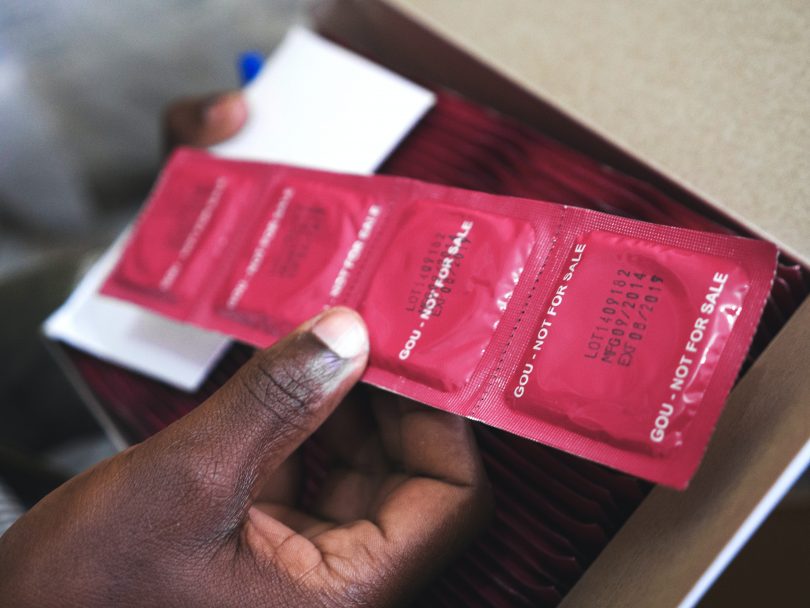I remember sometime back, I counseled a couple about contraceptive use. The wife had tried several of the available family planning options and didn’t get on well with them. She was wary of contraceptives but her husband was insisting that he didn’t want any more babies and that the woman should “do something”. He threatened to leave if she got pregnant again. After going through all the methods available for the woman, I mentioned vasectomy. Then I saw his demeanour immediately change. The atmosphere in the room grew even more tense. He seemed to think I was about to pounce on him, scalpel in hand, to “unman” him. This reaction is what we get many times from men; even some women, when male sterilization is mentioned.
From being blamed for infertility and miscarriage, to carrying a pregnancy to term, raising said children, and ensuring birth spacing, the burden of reproduction has been laid primarily on the shoulders of women for generations. Women spend more on contraceptives than men and bear the weight of the associated health issues. They also have to deal with the myriad side effects of contraceptive methods such as weight gain, irregular menstrual cycles, headaches, somatic symptoms, etc. However, baby-making is not done by one partner alone. It takes two to tango so how did contraception become a woman’s sole headache?
In the nineteenth century, European men bore the responsibility of ensuring that they did not impregnate women although there is no reliable evidence of this being the case in African communities possibly because of small population sizes and polygamy. Where men had the responsibility of determining their family sizes, they either used condoms or practised the withdrawal method. Then in 1938, contraceptive companies began to lure women to use their “feminine hygiene products”; this made way for the popularity of the pill. Now, this meant men didn’t have to stress with withdrawal or with condoms unless they were concerned about venereal disease. The advent of the pill, while liberating for its recipients, gradually absolved men from the responsibility of contraception if not from the ever-present threat of sexually transmitted diseases. Scientists, on the other hand, being stunned by the success of the pill further researched into more female contraception further shelving the idea of men’s contraceptive.
Over the years, there has been significant innovation in the types of female contraception available totaling about eleven methods with varying levels of invasiveness and duration. Nevertheless, in over fifty years the only effective contraception methods available for men are the condom and vasectomy. Some may argue for coitus interruptus (withdrawal method); where a man pulls out his penis from his partner’s vagina before ejaculation during sex. But it is known that the withdrawal method has one of the highest failure rates.

Female contraceptive methods usually involve either a barrier to physically prevent sperm from reaching the egg or hormonal methods comprising the pill and the depo vera injections. There are also long-acting reversible contraceptives such as IUDs and implants and natural methods that involve close monitoring of basal body temperatures, cervical mucus and keeping a gimlet eye on one’s menstrual cycle to know the safe and unsafe periods. But female contraception is no stroll in the park; it is incredibly difficult to accurately track the menstrual cycle without a fertility app, IUDs and implants can only be fitted by a professional, and oh the horror of side effects! Even a cursory search will produce pages of Reddit threads of women’s stories, detailing acne, excessive body hair, weight gain, migraines, and, ironically, a farewell to any desire for sex.
is it fair that heterosexual women report the least sexual satisfaction but bear the greatest burden for preventing any resulting pregnancy? Perhaps men ought to lean in a bit more.

The World Health Organization. (WHO)’s Department of Reproductive Health and Research iterates that the failure rate of most female methods outweighs the male methods. Even female sterilization (tubal ligation), a permanent and drastic form of birth control, has a 0.5 failure rate meaning that if a thousand women got their tubes tied, five of them would still get pregnant. The condom use which goes for both men and women was 14%. The method with the lowest failure rate and therefore the best at preventing pregnancy was male sterilization (vasectomy), which is 0.15% (UNFPA 1994).

Data tells us that we should advocate more for vasectomy uptake. But why is this not so? This method suffers a lot of myths. As already stated vasectomy is one of the most effective contraceptive methods. It’s a minor procedure where two small incisions are made in the groin of the man. The vas deferens tubes are located, cut and sealed. The procedure usually takes a short time and may not require an operating theatre. The complications associated with it are minimal compared to tubal ligation. It does not affect sexual performance in any way. Patients who take this method heal faster, and it is often reversible if the desire for more children arises later. It costs less as compared to other female methods because it’s a one-time cost procedure.
Another recently touted alternative for male hormonal contraception was expected to be 96% effective in preventing pregnancy but had to be abandoned when participants reported side effects such as acne, mood swings and depression. Sound familiar? To me, this problem is not merely a health issue; if the side effects for both male and female hormonal birth control are similar but men are less willing to take the risk of those side effects, it is because society disproportionately punishes women for the results of an unwanted pregnancy.
It is obvious that if more men took more responsibility for contraception, it would save the lives of women; the link between contraceptive use and reduced maternal mortality is well established. On the other hand, each time a man refuses to participate in or take responsibility for contraception, women’s lives are put at risk.





